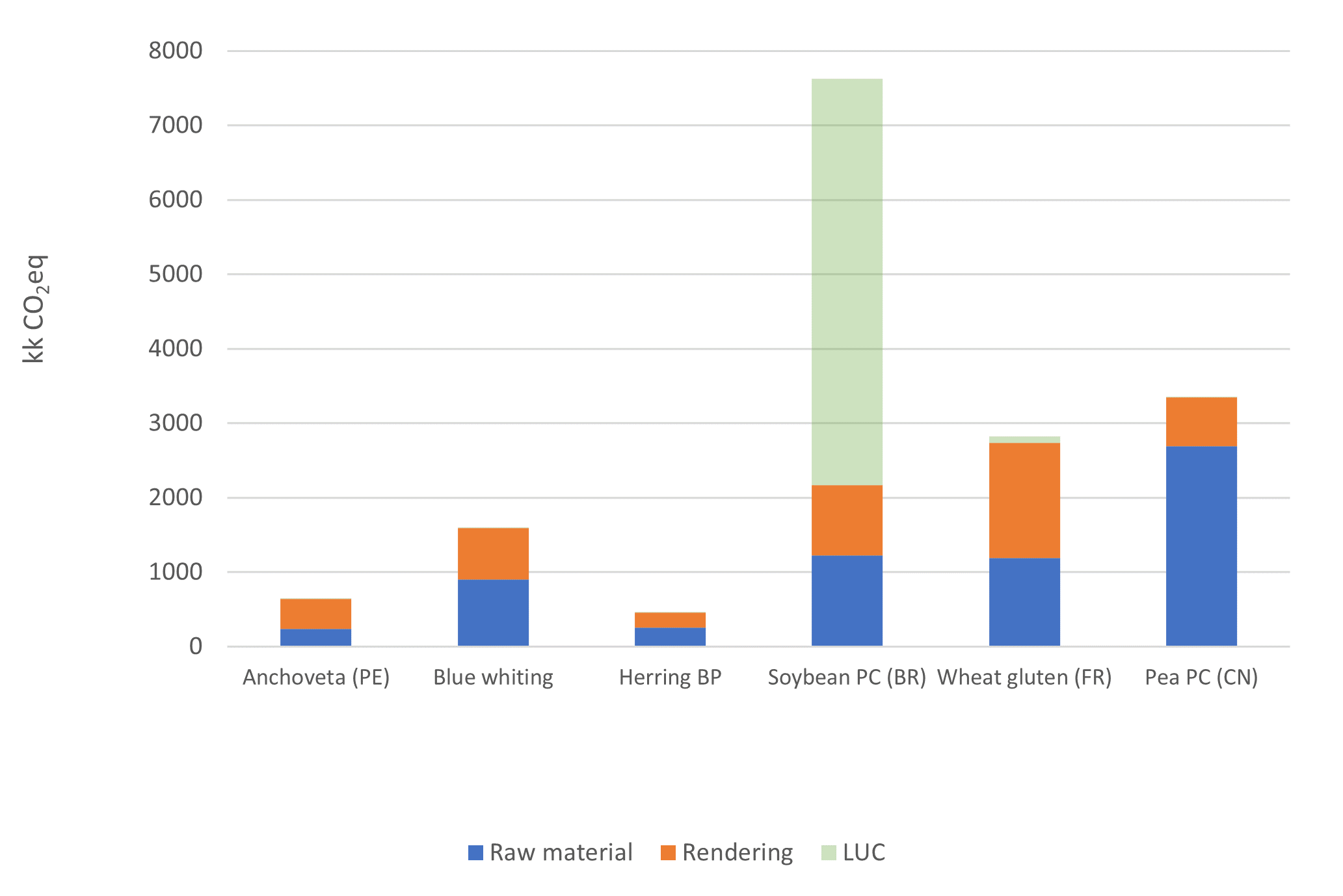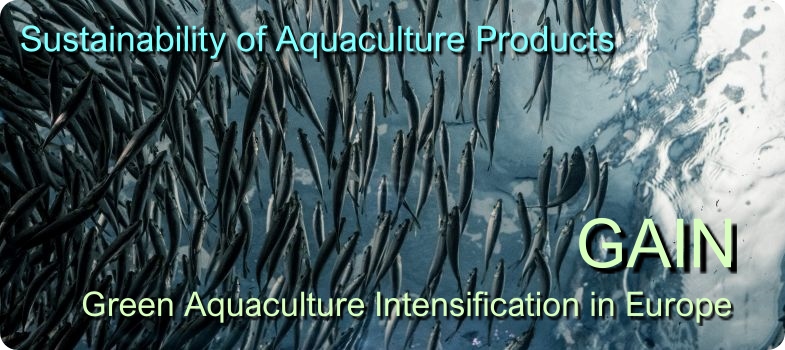Carbon footprint
The carbon footprint of ingredients often relates to the energy intensity of processing. In the case of marine ingredients, the impact is mostly dependent on the fuel required to catch fish, with lower processing impacts. Fuel intensity depends on the fishing method such as low impact purse seine netting compared to bottom trawls for demersal species and also on the distance travelled to the fishing ground. For agricultural ingredients, such as in the case of protein concentrates, glutens, and oils, although there can be emissions from fertiliser use, fuel, and LUC where included, processing energy is high. For novel ingredients such as single-cell proteins, the energy requirement can be especially high. Other factors that affect carbon footprints are the energy mix of where ingredients are produced, with high renewables contributions. Generally, marine ingredients have low carbon footprints compared with many terrestrial and novel feed ingredients, anchovy being especially low as the fisheries are close to the shore and use low fuel-intensity purse seine methods.

Figure 4. The carbon footprint of 1 tonne of selected feed ingredients. GAIN unpublished data and EcoInvent 3.0
Despite most impacts being through the provision of feed, there are still some substantial energy requirements at the farm level, depending on the species and system. Intensive shrimp systems are usually reliant on significant aeration and the drive towards more recirculation systems for salmon, particularly for large “super” smolt production also requires a lot more energy than traditional systems. However, carbon emissions are associated with that energy depending on how it is delivered. Shrimp systems sometimes use diesel generators and the market electricity mix in the producing countries may also be dependent on fossil fuels compared to Norwegian mixes that have more renewables and therefore fewer carbon emissions where salmon are produced.
Unfed and extensive aquaculture systems also have sustainability trade-offs. For large extensive shrimp systems, there may have been more coastal land clearance, threatening mangrove systems and leading to impacts through LUC. There are also applications of fertiliser that can lead to direct GHG emissions and perhaps more localised eutrophication. They may also have higher mortality due to predation or other management factors, leading to efficiency trade-offs that can affect carbon footprints and other impacts.
